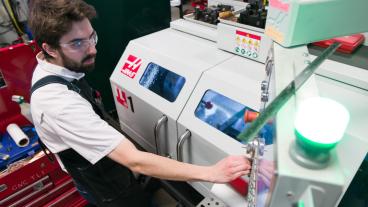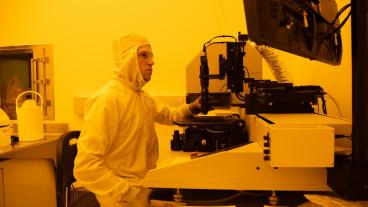This story appears in the Fall/Winter 2013 issue of Mines magazine.
How can light be manipulated to slice a clean incision in the fragile lens of a human eye? Or to create three-dimensional videos of processes deep inside the brain? Or to carve a tiny laboratory on a microscopic chip?
These are not the questions Jeff Squier ’84, MS ’86 was pondering in 7th grade, when he wrote the words “optical physicist” on a questionnaire asking what he wanted to be when he grew up.
“Really, I just liked the idea of playing with light,” he recalls.
Thirty-nine years later, that boyhood fascination has led the Mines physics professor and researcher to not only ask such questions, but also answer them by designing and building ultra-fast lasers that can cut, image and micro-machine in ways never before possible. His research team’s creations have been used by everyone from neuroscientists wanting to peer inside the dense neuronal tangles of a fly’s brain, to geneticists wanting to better understand, at the molecular level, how a corn plant grows. Through collaborations with private companies and other research institutions, they’re also working to develop more affordable and accurate laser-based microscopes and safer laser-based surgical techniques.
“He isn’t just building a bigger laser. He has a deep respect for the way light interacts with material,” says neuroscientist and University of California, San Diego, professor David Kleinfeld, who has used Squier’s lasers to chart blood flow and neuronal activity in the brains of rodents. “He is very clever in building lasers with interesting intrinsic properties. They could have a big impact.”
Read the rest of the story on the Mines magazine website.



